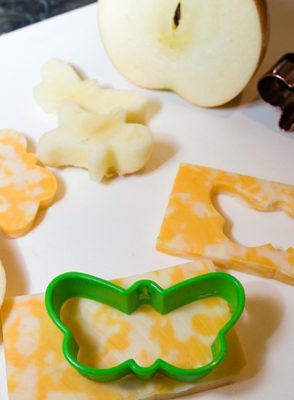When it comes to snack time, there’s no disputing that cheese is a major player.
It’s there, front and center, in pizza, nachos, quesadillas, and as a dip or topping. It’s readily available, easy to serve, and, in general, something kids love to eat.
But is it good for you? And what about cheese standing on its own merits as a viable healthy snack alternative?
According the Academy of Nutrition and Dietetics website eatright.org: “Cheese is a great source of the same nutrients found in milk, such as protein, calcium, phosphorus, zinc, vitamin A, riboflavin, and vitamin B12.”
“As part of a well-rounded nutrition plan, cheese snacks have their benefits,” says Wesley Delbridge, registered dietitian and nutritionist and director of food and nutrition for the Chandler (Arizona) Unified School District. “Protein in cheese can aid in muscle growth and repair and can balance out those carbohydrate-high snacks and meals, preventing blood sugars from spiking.

“The calcium in cheese can help keep teeth and bones develop and stay strong. Although you do not get the same amount of calcium as you would from liquid milk, cheese can still be a great source of calcium, which most Americans, especially most kids, are not getting enough of each day.”
The problems with cheese snacks are two-fold. Certain cheese types can be high in sodium and, as Delbridge points out, “Cheese is often high in saturated fat, which in excess can increase your risk of cardiovascular disease and high cholesterol. Full-fat cheese is higher in calories, as well as saturated fat.”
So, what kind of cheese is the best choice for snack time?
“As with all dairy products, look for cheeses that are reduced-fat and fat-free to take advantage of the nutritional benefits of cheese without the disadvantages,” Delbridge says. “You will usually still get the same amount of protein, calcium and other important nutrients without sacrificing the excess calories and saturated fat.”
On Delbridge’s list of preferred cheeses: Fat-free and reduced-fat cheddar, mozzarella, Parmesan, Swiss, feta, goat, cottage cheese, and ricotta cheese.
“Choosing reduced-fat (“part-skim”) or fat-free mozzarella cheese is a great way to take advantage of its nutritional benefits while minimizing unhealthy extras,” Delbridge says. Ricotta cheese is a soft cheese and a good source of calcium and protein. Romano cheese and Parmesan cheese are hard cheeses that can be great choices. Because of their intense flavor, a little bit of Romano or Parmesan can go a long way, making it easier to eat in moderation.
For comparison purposes, know that a traditional cheddar has about 120 calories and 10 grams of fat per ounce, mozzarella about 80 calories and seven grams of fat per ounce, cottage cheese about 30 calories and 1.5 grams of fat per ounce.
So, if we ditch the breaded and fried cheese sticks, remain wary of processed cheeses, and limit the amount of unhealthy crackers that might accompany our snacks, cheese presents some terrific alternatives.
Parents.com lists string cheese (“The protein in this kid-friendly snack keeps energy levels high until dinnertime”) and quesadillas among its list of “20 Best Snacks for Kids.”
For many, string cheese, straight from the fridge, is the preferred snack. It’s prepackaged, making it handy and accessible. What’s more, it’s not a processed cheese, and when made with part-skim mozzarella, delivers protein without an excess of calories.

Writing about healthy eating for Demand Media, Sara Ipatenco offers several suggestions for making cheese more desirable as a snack-time choice.
- Combine cheese with nutritious ingredients such as vegetables, apples, or whole-grain crackers.
- Consider twisted string cheese, incorporating cheddar and mozzarella.
- Using a knife or cookie cutter, turn slices of hard cheese into entertaining shapes for younger children: pumpkins for Halloween, hearts for Valentine’s Day.
- Allow your child to experiment by selecting a new variety of cheese.
- Make a quick and healthy quesadilla by sprinkling cheese on a whole-wheat tortilla, warming until the cheese melts, and adding toppings such as chopped tomatoes and black olives.

What’s your experience with cheese snacks? Please share and be sure to look for more Snack of the Week suggestions and information on healthy eating on Learning Liftoff’s food pages.





































